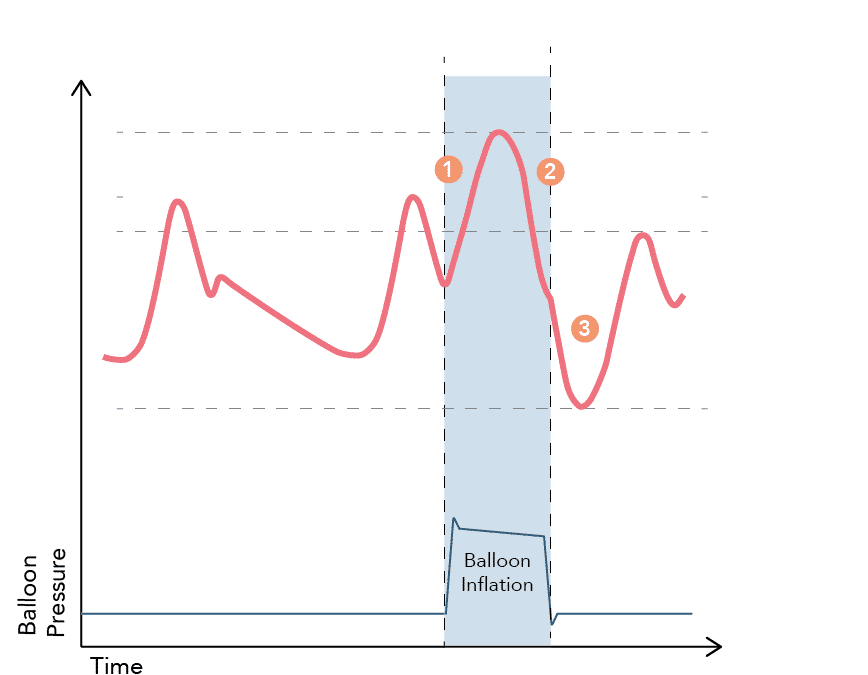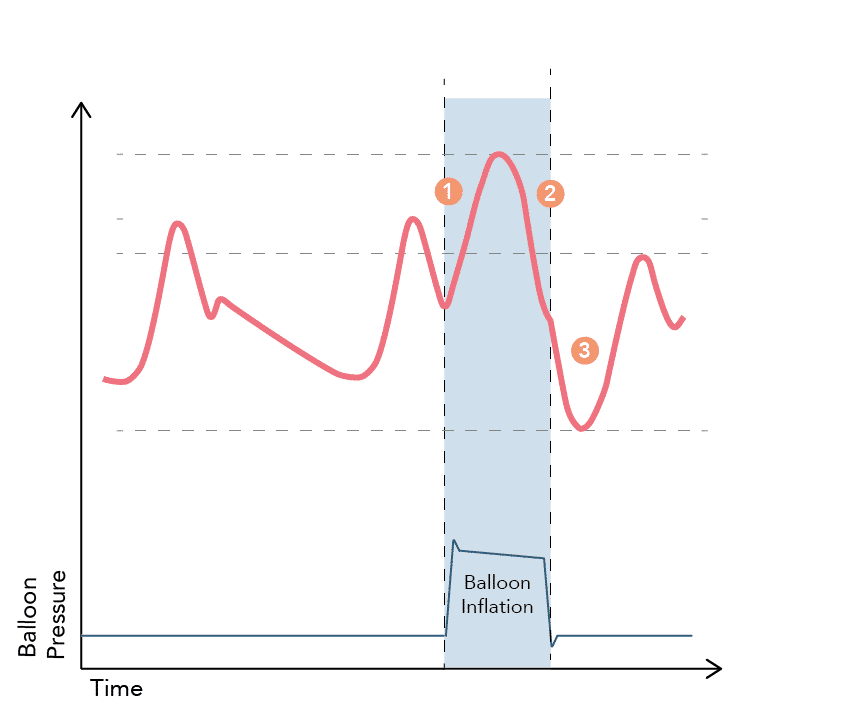1. Balloon inflation occurs at the onset of diastole, synchronously with aortic valve closure and the appearance of the dichroitic notch . The displacement of blood results in a rapid rise in aortic pressure (known as assisted / augmented diastole) leading to “active” coronary artery perfusion.
2. The pressure falls as the elastic energy in the tissues of the aorta is converted into kinetic energy of the aortic blood flow
3. Balloon deflation occurs at the beginning of systole during isovolumetric contraction, causing an effective reduction in afterload. This causes the end-diastolic and systolic aortic pressures to be reduced (assisted end-diastole and systole)
2. The pressure falls as the elastic energy in the tissues of the aorta is converted into kinetic energy of the aortic blood flow
3. Balloon deflation occurs at the beginning of systole during isovolumetric contraction, causing an effective reduction in afterload. This causes the end-diastolic and systolic aortic pressures to be reduced (assisted end-diastole and systole)


